Learning Go
by Jon Bodner
Copyright 2021 Jon Bodner. All rights reserved.
Printed in the United States of America.
Published by OReilly Media, Inc., 1005 Gravenstein Highway North, Sebastopol, CA 95472.
OReilly books may be purchased for educational, business, or sales promotional use. Online editions are also available for most titles (http://oreilly.com). For more information, contact our corporate/institutional sales department: 800-998-9938 or corporate@oreilly.com .
- Acquisitions Editor: Suzanne McQuade
- Developmental Editor: Michele Cronin
- Production Editor: Beth Kelly
- Copyeditor: Piper Editorial
- Proofreader: FILL IN PROOFREADER
- Indexer: FILL IN INDEXER
- Interior Designer: David Futato
- Cover Designer: Karen Montgomery
- Illustrator: Kate Dullea
- March 2021: First Edition
Revision History for the First Edition
- 2020-03-01: First Release
See http://oreilly.com/catalog/errata.csp?isbn=9781492077213 for release details.
The OReilly logo is a registered trademark of OReilly Media, Inc. Learning Go, the cover image, and related trade dress are trademarks of OReilly Media, Inc.
The views expressed in this work are those of the author, and do not represent the publishers views. While the publisher and the author have used good faith efforts to ensure that the information and instructions contained in this work are accurate, the publisher and the author disclaim all responsibility for errors or omissions, including without limitation responsibility for damages resulting from the use of or reliance on this work. Use of the information and instructions contained in this work is at your own risk. If any code samples or other technology this work contains or describes is subject to open source licenses or the intellectual property rights of others, it is your responsibility to ensure that your use thereof complies with such licenses and/or rights.
978-1-492-07721-3
[LSI]
Preface
My first choice for a book title was Boring Go because, properly written, Go is boring.
It might seem a bit weird to write a book on a boring topic, so I should explain. Go has a small feature set that is out of step with most other modern programming languages. Well-written Go programs tend to be straightforward and sometimes a bit repetitive. Theres no inheritance, no generics (yet), no aspect-oriented programming, no function overloading, and certainly no operator overloading. Theres no pattern matching, no named parameters, no exceptions. To the horror of many, there are pointers. Gos concurrency model is unlike other languages, but its based on ideas from the 1970s, as is the algorithm used for its garbage collector. In short, Go feels like a throwback. And thats the point.
Boring does not mean trivial. Using Go correctly requires an understanding of how its features are intended to fit together. While you can write Go code that looks like Java or Python, youre going to be unhappy with the result and wonder what all the fuss is about. Thats where this book comes in. It walks through the features of Go, explaining how to best use them to write idiomatic code that can grow.
When it comes to building things that last, being boring is great. No one wants to be the first person to drive their car over a bridge built with untested techniques that the engineer thought were cool. The modern world depends on software as much as it depends on bridges, perhaps more so. Yet many programming languages add features without thinking about their impact on the maintainability of the codebase. Go is intended for building programs that last, ones that are modified by dozens of developers over dozens of years.
Go is boring and thats fantastic. I hope this book teaches you how to build exciting projects with boring code.
Who Should Read This Book
This book is targeted at developers who are looking to pick up a second (or fifth) language. The focus is on people who are new to Go. This ranges from those who dont know anything about Go other than it has a cute mascot, to those who have already worked through a Go tutorial or even written some Go code. The focus for Learning Go isnt just how to write programs in Go, its how to write Go idiomatically. More experienced Go developers can find advice on how to best use the newer features of the language. The most important thing is that the reader wants to learn how to write Go code that looks like Go.
Experience is assumed with the tools of the developer trade, such as version control (preferably git) and IDEs. Readers should be familiar with basic computer science concepts like concurrency and abstraction, as the book explains how they work in Go. Some of the code examples are downloadable from Github and dozens more can be tried out online on The Go Playground. While an internet connection isnt required, it is helpful when reviewing executable examples. Since Go is often used to build and call HTTP servers, some examples assume familiarity with basic HTTP concepts.
While most of Gos features are found in other languages, Go makes different tradeoffs, so programs written in it have a different structure. Learning Go starts by looking at how to set up a Go development environment, and then covers variables, types, control structures and functions. If you are tempted to skip over this material, resist the urge and take a look. It is often the details that make your Go code idiomatic. Some of what seems obvious at first glance might actually be subtly surprising when you think about it in depth.
Conventions Used in This Book
The following typographical conventions are used in this book:
ItalicIndicates new terms, URLs, email addresses, filenames, and file extensions.
Constant widthUsed for program listings, as well as within paragraphs to refer to program elements such as variable or function names, databases, data types, environment variables, statements, and keywords.
Constant width boldShows commands or other text that should be typed literally by the user.
Constant width italicShows text that should be replaced with user-supplied values or by values determined by context.
Tip
This element signifies a tip or suggestion.
Note
This element signifies a general note.
Warning
This element indicates a warning or caution.
Using Code Examples
Supplemental material (code examples, exercises, etc.) is available for download at https://github.com/learning-go-book.
If you have a technical question or a problem using the code examples, please send email to .
This book is here to help you get your job done. In general, if example code is offered with this book, you may use it in your programs and documentation. You do not need to contact us for permission unless youre reproducing a significant portion of the code. For example, writing a program that uses several chunks of code from this book does not require permission. Selling or distributing examples from OReilly books does require permission. Answering a question by citing this book and quoting example code does not require permission. Incorporating a significant amount of example code from this book into your products documentation does require permission.

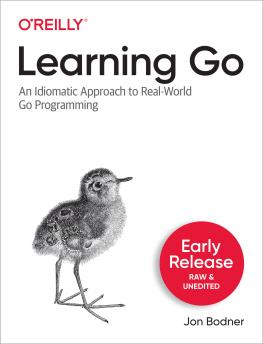
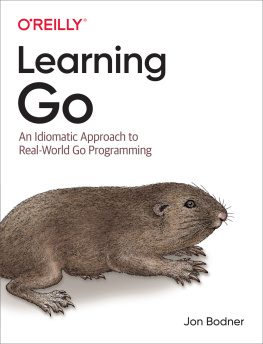


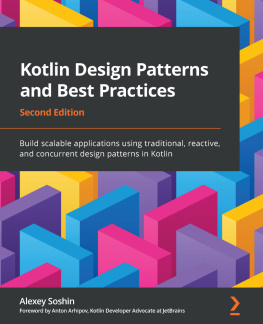
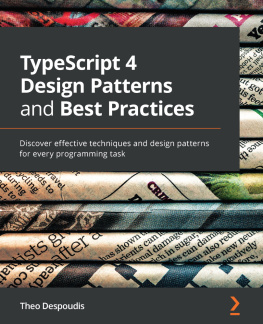
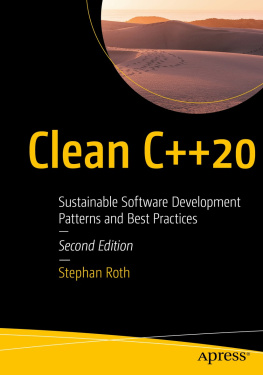


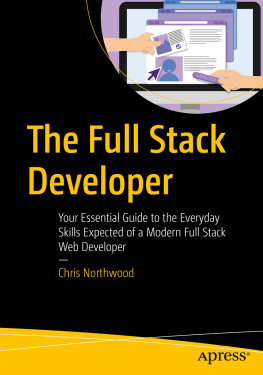
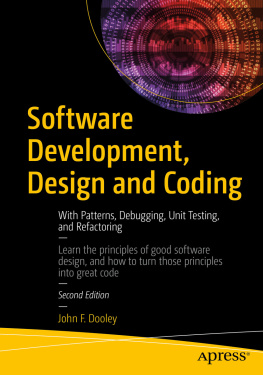
![Addy Osmani [Addy Osmani] - Learning JavaScript Design Patterns](/uploads/posts/book/120569/thumbs/addy-osmani-addy-osmani-learning-javascript.jpg)
